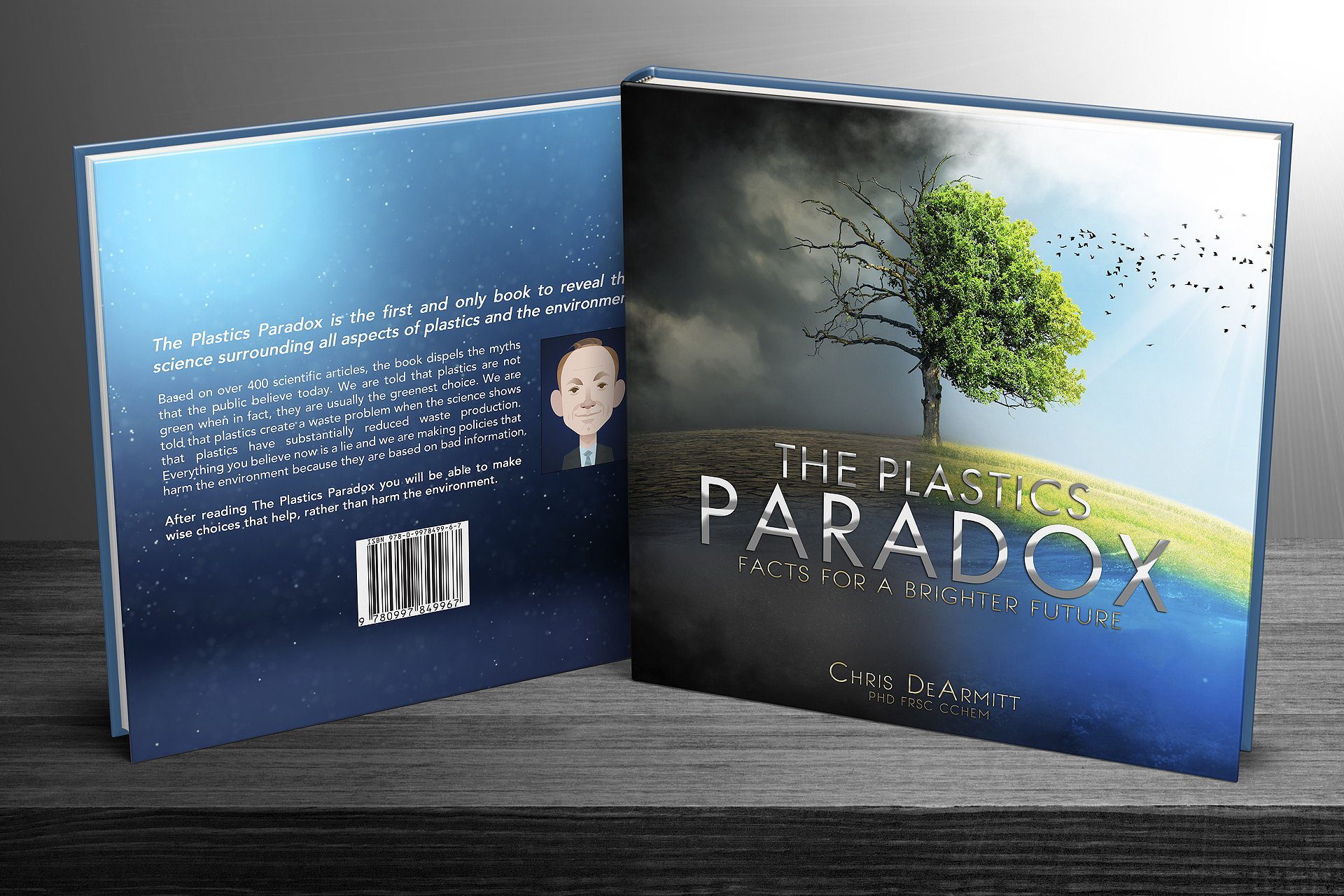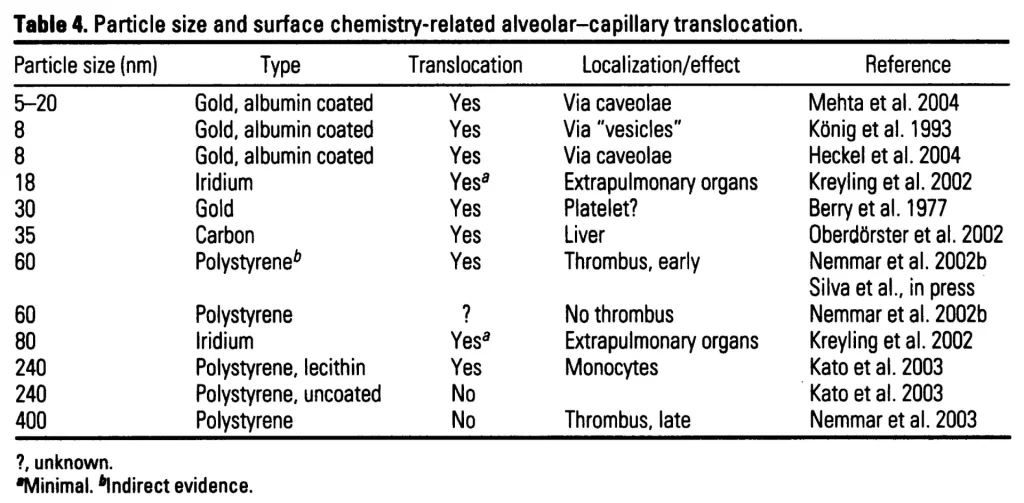PLASTICS & THE ENVIRONMENT
MICROPLASTICS IN THE BRAIN
evidence & perspective from the leading INDEPENDENT expert
Introduction
Recent mainstream media and internet articles have heralded a revolutionary new finding that plastic nanoparticles can cross the blood-brain barrier and are speculating that it is cause for deep concern. This is the scientific paper that has caused such a stir:
“Micro- and Nanoplastics Breach the Blood–Brain Barrier (BBB): Biomolecular Corona’s Role Revealed”
Studies also show that people do not have a great deal of trust in the media, and would rather hear the science from scientists. As an independent expert, I have spent years checking such claims for the public. Let us examine this new story to determine what it really means and whether there is cause for panic. If you need information of a keynote talk covering all aspects of microplastics, exposure and health the Dr. DeArmitt has you covered, he is considered the leading independent microplastics expert having read hundreds of scientific studies.
Dust Dangers
“Nine out of 10 people breathe air that does not meet World Health Organization pollution limits. Air pollutants include gasses and particulate matter and collectively are responsible for ∼8 million annual deaths. Particulate matter is the most dangerous form of air pollution, causing inflammatory and oxidative tissue damage.”
Particles in the Brain
That is a scary thought indeed. But it turns out that the movement of inhaled particles into organs, including the brain – so-called “translocation”, has been known to scientists for decades. The first studies showed movement of inhaled particles from the lungs to the liver but they were unable to detect any in the brain or other organs in that first study.
“These results demonstrate effective translocation of ultrafine elemental carbon particles to the liver by 1 d after inhalation exposure.”
The Oberdörster group continued to look into translocation of particles in the body. Here is a summary of research done at that time. They cited a study as far back as 2002, over two decades ago, showing that polystyrene was one such type of nanoparticle among several others. This shows that the “discovery” of synthetic polystyrene nanoparticles crossing into the brain of rodents is not new at all, but is, in fact, over 20 years old.
plastics in the environment are not polystyrene but polyethylene (PE), polypropylene (PP) and polyethylene terephthalate (PET).
In 2024 a new publication claimed that they found 0.5% by weight microplastic in the human brains from deceased people – “Bioaccumulation of Microplastics in Decedent Human Brains Assessed by Pyrolysis Gas Chromatography-Mass Spectrometry”. The amount claimed far too high to be credible and even the authors admit that the method they used is new and unverified. That did not stop news headlines from spreading though like this one on CNN entitled “Tiny shards of plastic are increasingly infiltrating our brains, study says“. Looking at how they performed the study, there are explanations for their anomalously high reading including the fact that they centrifuged the samples. We know from other studies that large numbers of microplastics are generated each time a cap is screwed on and off and what are centrifuge tubes made of? That’s right – plastic! Anyone who has run a centrifuge knows that it creates high frequency vibrations likely to shake the cap causing abrasion between it and the tube, which would liberate high concentrations of microplastic particles. It is details like this that make the difference between credible science and sensational nonsense. For example, they talk about “tiny shards of plastic” when the study admits that they don’t know what the particles are because they were unable to analyze them. Two scientific reviews found that about 90% of microplastic studies are flawed and a simple calculation completely disproves the claim made in this latest study.
The human brain weighs about 1300-1400g which means that 0.5 % by weight of the brain in microplastic would be 6.8g.
We know from an independent review of all data that we ingest 0.0000006g of plastic per day.
It would therefore take over 30 000 years to ingest 6.8g of plastic particles!
Even if every plastic particle we eat and breathe were to end up in the brain, that would take tens of thousands of years to get to the ridiculous concentration claimed in this new article using their new and unvalidated method. Studies show that the vast majority of such material passes right through fish, birds and humans without effect. Is this new study reasonable compared to all the other studies about microplastics in the human body? The answer is a clear “no” – the other studies show 100 000 times less plastic than this new highly dubious one does. See Quantitation of micro and nanoplastics in human blood by pyrolysis-gas chromatography–mass spectrometry for a summary of those other studies.
In the table above, several types of nanoparticle were shown to translocate. What other materials have been found to move across into the brains of rodents?
Manganese Oxide Nanoparticles
Carbon Black Nanoparticles
Zinc Oxide Nanoparticles
Iron Soot Nanoparticles
Some of these are more relevant than others. For example, we are actually exposed to soot, carbon black, zinc oxide and titanium dioxide because they are all present in the environment. However, we are never actually exposed to synthetic polystyrene nanoparticles of the kind used in the 2023 study.
While looking into the science on this topic, I also learned that the ability of nanoparticles to cross into the brain is exploited by scientists – they actually use particles as medicine to deliver drugs targeted to the brain. There are quite a few studies on the topic.
Concentration
Many of the studies shown above were performed with much higher concentrations of nanoparticle than found in the environment. By using high concentrations, the scientists are far more likely to see an effect, but using such high concentrations means that such studies are not valid for predicting what occurs in the real world, where actual concentrations are far lower. Biological effects and toxicity are very concentration dependent. For example, oxygen and table salt are considered safe and essential but both can be lethal if the concentration is increased. With that in mind, let us look at the concentration of polystyrene nanoparticle used in the new, 2023, study.
How much is that compared to the amount actually measured in the environment?
That amount translates to 0.5g per liter of water.
The amount in the environment is 1 ng per liter of water which means 0.000 000 001 grams per liter.
We now see that the amount of microplastic used in the 2023 study was about 100 million times too much compared to what is realistic, as described by Lenza et al..
Perspective
As we have seen, particulate pollution is a real problem. It is appropriate to study it and evaluate the risks. However, it is not appropriate to obsess over plastics, which make up just 0.001% of particles we ingest.
Conclusions
We have seen that what at first strikes us as a scary headline, turns out to be no more than just that. The “news” that nanoparticles can enter rodent brains is not news because it has been known and studied for over twenty years. Many kinds of particle including carbon, gold, silver, zinc oxide, titanium dioxide and manganese oxide were found to exhibit this ability.
So, the 2023 study was not actually news and it turns out that many types of nanoparticles behave in the same manner. So, why was there no media coverage for those other materials? Why only try to scare the public over plastic and ignore all the other materials? That is a recurring theme with the media. It is all too easy to get clicks and advertising dollars by needlessly frightening people.
Furthermore, the science done in the 2023 study was irrelevant because they used a kind of special synthetic nanoparticle that does not even exist in the environment. Not only that, but they used millions of times too high a concentration, further diminishing the validity of the work.
- The study does not show microplastics in human brains
- The study does not apply to the kinds of particle we are actually exposed to
- The study does not use realistic concentrations of particle
- The study is not even news because this has been known for all kinds of particles in mice for 20 years
Should we be concerned then? Everyone has to choose for themselves what to worry about, but as a professional scientist, this does not make my top ten or even my top million. More information on microplastics science and why many studies are not valid can be found here and there is a page about microplastics in blood here. A page on microplastic exposure sources, risks and how to avoid exposure here. Contact Dr. DeArmitt if you need a microplastics expert and ask about the keynote speech devoted to this topic.
“you can be for the environment, or against plastics, but not both”.

Dr. Chris DeArmitt is a renowned independent scientist and keynote speaker with decades of experience solving tough technical challenges for some of the world’s leading companies. He is a Fellow of the Royal Society of Chemistry and Fellow of the Institute of Materials, Minerals and Mining. He is also a Chartered Chemist with a long list of publications, presentations and patents to his name. His review of the science around plastics and the environment was performed unpaid to preserve impartiality.
Income 2022 : ~ 60% NAICS 424690 Chemicals, ~30% NAICS 423990 Durable Goods, 0% NAICS 541110 Legal, ~10% NAICS 325211 Plastics Composition varies over time




